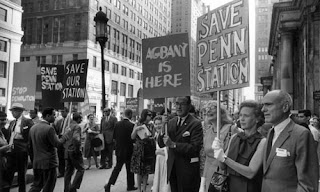In Action around the Edges, Crimp recounts his move from Greenwich Village to Tribeca in Lower Manhattan. His move to a loft in Tribeca was primarily due to his desire to become a serious art critic. He believed belonging to the “right” crowd would help him accomplish his goal. Crimp goes on to detail the art scene. Abandoned lofts became places to display art performances and an outlet for photographers who wished to escape traditional rules and critics. Crimp writes about Gordon Matta-Clark whose art found opposites in the city. Where many found abandoned buildings a problem, Matta-Clark found them useful. He saw potential where others found lost. He found beauty where others saw destruction. Another artist Crimp writes about is Peter Hujar. Hujar took photographs at night along the Far West Side of Manhattan. In the photographs, the city was abandoned and deserted. Through the photographs, Hujar wanted to convey a sense that the city is open to everyone. It belongs to the dwellers. It was theirs for the taking. Projects: Pier 18 was a series of photographs taken by the photographic team, Shunk-Kender. It included photographs of 27 artists as they performed on the abandoned pier as the city loomed in the background. The piers continued to be inspiration for many artists including Alvin Baltrop and Vito Acconci. The piers were eventually torn down for Battery Park City. In this case, politics won out for what would be viewed as public space.
Martha Rosler’s, Culture Class: Art, Creativity, Urbanism, continues the theme by stating space has displaced time as the main advancement resource for urbanism. I believe by this statement she means that in our history, time played an important role in urbanism. There wasn’t enough time to do everything that needed to be done. Now, however, we are running out of space. We have built our cities to their capacity. More people have moved into the cities. We have expanded to make up for this movement of people. The downside to this is that the solution was to move the original homeowners out of their homes and neighborhoods to make room for the new middle and upper class moving in. The upper and middle class starting purchases older homes to tear them down and built multi-million dollar homes. As Rosler states “Cities were being remade for the benefit of the middle and upper class.” City services were concentrated on the renewal of downtown areas while the poorer area suffered. Public art was commissioned as a way to enhance this urban development.
Evictions: Art and Spatial Politics, by Rosalyn Deutsche describe the divide between art, architecture, and urban design with city social space and public space. She states with urban development, new public space and art is commissioned. As these are developed, she argues, they destroy the original city environment leaving the residents in jeopardy. As Deutsche states, homelessness and urban development are linked. As we bring in new business, new public art, and new public spaces, the people have to go somewhere else for their basic needs such as housing, food, and city services. Her book is a collection of essays on the use of public art and how it either beneficial or not to the city as a whole. She questions the use of public art to beautify a city. Is commissioned public art really a useful benefit for a city where there are homeless or poor citizens without the basic needs of life?
Tear Down McMansions in Naperville, IL
The downtown area grew fast. Barnes and Noble replaced the bowling alley that once occupied the corner of Chicago Ave and Washington St. Chicago restaurants like Sullivan’s, Catch 35 and Hugo’s moved in replacing Cee Bee Grocery Store and several smaller homes. People were displaced. Homelessness became part of Naperville.
Barnes & Noble - Chicago Ave / Washington St., Naperville, IL
Scott Huber - Homeless Man in Naperville, IL who protests urban development.
From the Merriam-Webster Dictionary - http://www.merriam-webster.com/
Space - an empty area (usually bounded in some way between things); an area reserved for some particular purpose
Politics - social relations involving intrigue to gain authority or power
Public - not private; open to or concerning the people as a whole









